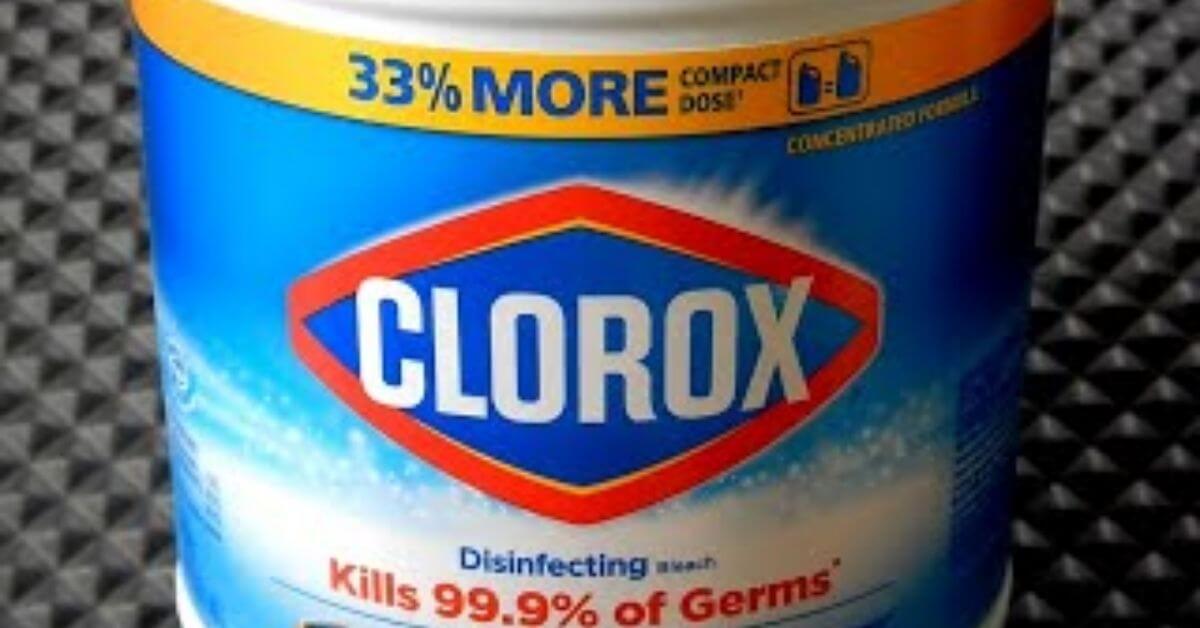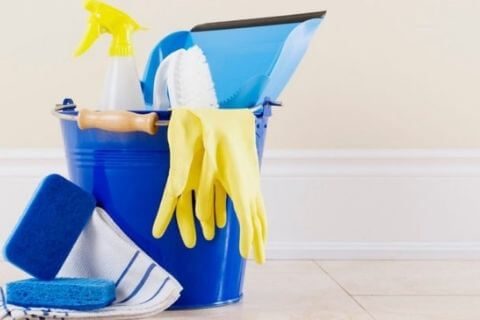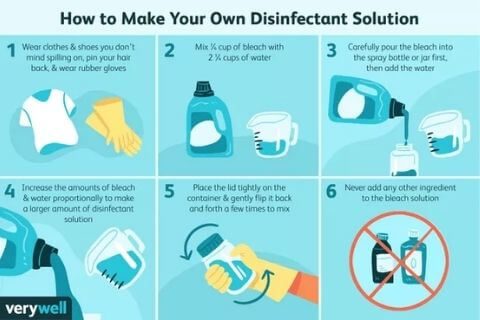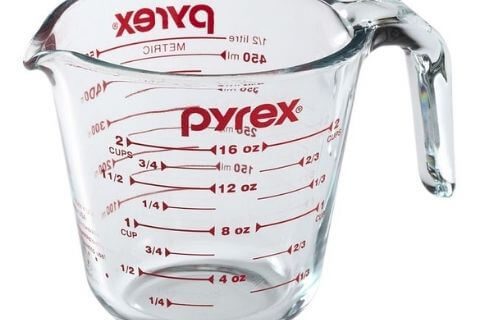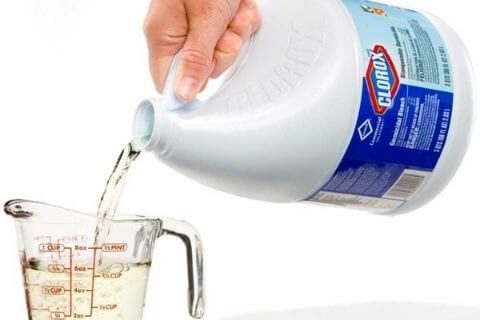Bleach is a powerful biocide with its main constituent being the 3-6% sodium hypochlorite (NaOCl) solution. It is adored as a modern convenience, for its ability to kill all types of bacteria and mold
Bleach is a powerful biocide with its main constituent being the 3-6% sodium hypochlorite (NaOCl) solution. It is adored as a modern convenience, for its ability to kill all types of bacteria and mold there is in such a short amount of time, on such an industrial scale.
However, the product also comes with various hazards for the users as well as any objects it is used to clean with. In most circumstances of household usage, bleach has to be diluted; on one hand, we want to reduce as much as possible the volume of this powerful, yet toxic product being used; but on the other hand, we don’t want to over-dilute bleach to the point that we compromise the biocidal effect we desire to achieve.
In this article, we will discuss everything you need to know about the bleach to water ratio for a disinfecting solution made from bleach and water
For a bleach diluting operation, you will need to get ready the following items:
As we have got all the supplies needed for the job, the next step would be to concoct a cleaning solution that contains enough bleach to achieve your desired cleaning goal.
The first note is, NEVER mix bleach with any other cleaning agent because it is almost guaranteed that would produce lethal chlorine fume. The best method is always to mix it with water.
For different cleaning goals, you will have slightly different chlorine concentrations that you need to achieve with your concoction and, hence, a different bleach-to-water ratio in the making of such a mixture.
In this article, we will quote the suggestions from Clorox – one of the most famed manufacturers of bleach and bleach-based cleaning products. But if you use bleach products from a different manufacturer, always make sure to check the manufacturer’s guides for the best results. However, the generic bleach products shouldn’t be too much different from one another.
A bleach solution of 1500 ppm in bleach concentration is suggested for general disinfecting. This 1500 ppm concentration can be achieved by mixing water and bleach at a ratio of 48:1, with 6 minutes of contact time required. The volume of water and bleach can also be adjusted based on your different cleaning requirements. Here’s how to achieve this ratio using measuring tools:
| Amount of Cool Water | Amount of Bleach | Contact Time | |
| Ratio | 48 parts | 1 part | |
| Five Gallon Bucket | 1 gallon | 1/3 cup | 6 minutes |
| 2 gallons | 2/3 cup | 6 minutes | |
| 3 gallons | 1 cup | 6 minutes | |
| 40 oz. spray bottle | 5 cups | 5 teaspoons | 6 minutes |
| 32 oz. spray bottle | 4 cups | 4 teaspoons | 6 minutes |
| 24 oz. spray bottle | 3 cups | 3 teaspoons | 6 minutes |
| 16 oz. spray bottle | 2 cups | 2 teaspoons | 6 minutes |
According to Clorox, this is also the water to bleach ratio sufficient for killing mold. To kill mold with this solution, spray the molded surface and let the solution sits for 10 minutes before beginning scrubbing.
An upgrade to a higher bleach content of 2000 ppm in your bleach-based cleaning solution will empower it to kill a wider range of harmful organisms. These include dangerous pathogens like Strep, Bordetella, Listeria + Herpes, MERS, Ebola + Athletes Foot Fungus.
This 2000 ppm bleach concentration can be achieved by mixing water and bleach at a ratio of 36:1, with 5 minutes of contact time required. The volume of each ingredient can also be adjusted based on your different cleaning requirements. Here’s how to achieve this ratio using measuring tools:
| Amount of Cool Water | Amount of Bleach | Contact Time | |
| Ratio | 36 parts | 1 part | |
| Five Gallon Bucket | 3/4 gallon | 1/3 cup | 5 minutes |
| 1.5 gallons | 2/3 cup | 5 minutes | |
| 40 oz. spray bottle | 4.5 cups | 5 teaspoons | 5 minutes |
| 32 or 24 oz. spray bottle | 3 cups | 4 teaspoons | 5 minutes |
| 16 oz. spray bottle | 1.5 cups | 2 teaspoons | 5 minutes |
Steps to disinfect using bleach
Once having finished concocting the bleach-based cleaning solution suitable for your cleaning goals, you may proceed to the cleaning. Here are the steps to disinfect any part of your home using bleach:
As we have discussed earlier, bleach contains very potent chemicals that could easily release hazardous products under the right (wrong) conditions. So the first thing you should do is to take steps to make sure that you are fully protected from the potential hazards.
The safety measures include equipping yourselves with protective gears and ventilating the space where the cleaning is done. For bleach- or any chlorine-related works, you should equip yourselves with you should equip yourself with protecting gears, such as a respirator, rubber gloves, protective goggles, and long-sleeve clothes. To ventilate the area, open the windows, or turn on the exhaust fans in case there is no window.
Another thing you should check is whether or not bleach is safe to use on the surfaces you wish to clean. For surfaces that bleach may corrode, such as metal, plastic, granite, etc. use another cleaning agent.
You can apply the bleach solution to the surface either by spraying, sponging, or mopping it on the surface. Then you will have to wait for a certain amount of time for the bleach to take effect. Depending on what you are planning to clean with the bleach solution, consult the manufacturer’s guide as well as the cleaning guide you are using to find the suitable wait time to both achieve your cleaning goals and preserve the surfaces you wish to clean.
After the recommended wait time, the bleach would have broken down the stains, the mold, or any other type of buildup you need to clean enough so that it could be scrubbed away. Scrub the surface to remove the buildup.
After finished scrubbing, rinse the surface thoroughly with water to clean up any leftover debris as well as the bleach residual. You don’t want to leave any bleach residual on the surface because, given enough time, it can corrode even some of the more chemical-resistant surfaces.
This section will be dedicated to answering some frequently asked questions regarding the use of bleach in cleaning.
Bleach and water solutions need to be used within the day it’s made because the solution would break down quickly into salt and water. Ready-to-use commercial products, on the other hand, are formulated with measures to prevent this breakdown, and would typically have a one-year shelf life when stored properly in a cool place, away from direct sunlight in a cool.
For mold and mildew, the 1500 ppm solution would be sufficient. Saturate the solution on the surface you wish to clean, then let it sit for 10 minutes before rinsing.
Firstly, you should check to make sure that the bleach product is sodium-hypochlorite-based disinfecting bleach. Sodium hypochlorite bleach products from most brands are similar and typically comes with a uniform sodium hypochlorite concentration of 3-6%, so they should be viable for interchangeable use.
Love these tips for cleaning with bleach? Sparkling and Beyond have even more cleaning tips and guides in our cleaning tips library for you to explore. We also provide professional and affordable cleaning services for any other part of your living room, as well as any other part of the house, for any degree of need. We are proud to be of service in keeping your home sparkling clean and healthy.

As the admin of Sparkling & Beyond, I bring a wealth of knowledge and passion for excellence in the cleaning industry. With years of experience in providing top-notch cleaning solutions, I am dedicated to sharing valuable insights and tips to help maintain pristine and healthy living environments. My mission is to ensure every home and office we service sparkles with cleanliness and comfort.
![]()
